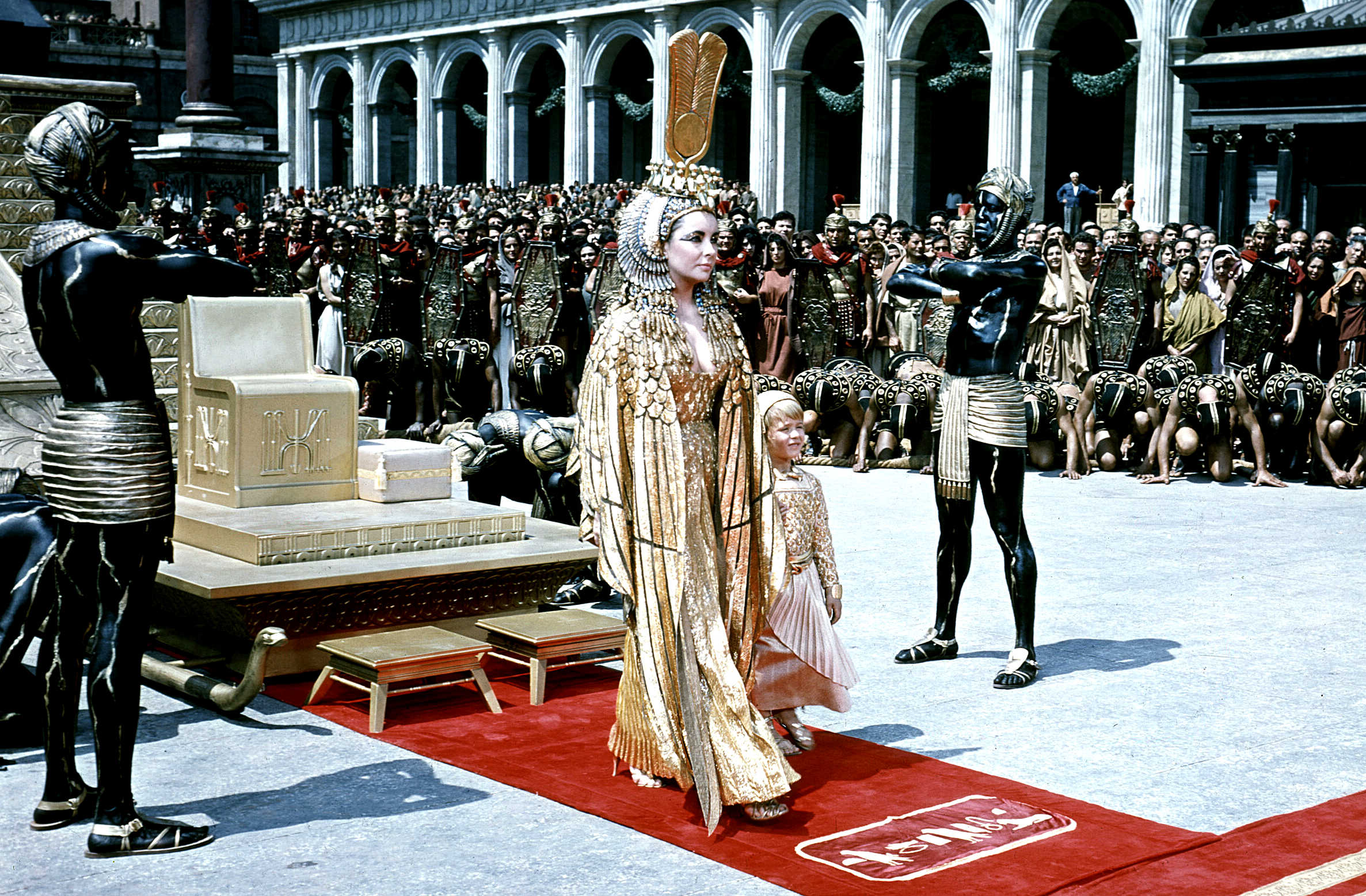Cleopatra's
suicide was a final act of defiance against Rome and
Octavian, a symbolic gesture that has survived the sands of
time, made all the more potent by the bite from a poison
asp, as the means of departure. A major blow to the PR
intended by the Emperor's conquest of Egypt and vanquishing
of Mark Antony at the Battle
of Actium.
TIMELINE OF THE EGYPTIAN PHARAOH QUEEN 69 - 30 BC
Cleopatra's life begins with her birth in Alexandria as a princess in the Ptolemaic court to her suicide in Alexandria a brief 39 years later.
BIRTH & RISE TO POWER
69BC: Cleopatra is born in Alexandria, the second of five children to
King Ptolemy XII and an unknown woman.
58: Ptolemy Auletes (also known as Ptolemy XII) flees Egypt, and Cleopatra's elder sister Berenike IV takes the throne.
55: Ptolemy XII is restored to the throne by the Romans including
Mark
Anthony; Berenike IV is executed.
51: Ptolemy XII dies, leaving his kingdom to joint rule by his 18-year-old daughter, Cleopatra and her younger brother Ptolemy XIII. By mid-year she removes Ptolemy XII from joint rule and forms a brief alliance with Ptolemy XIV.
50: Ptolemy XIII regains ascendancy with the help of Ptolemy XII's ministers.
49: Gnaeus Pompeius the Younger comes to Alexandria asking for help; together the pharaohs send ships and troops.
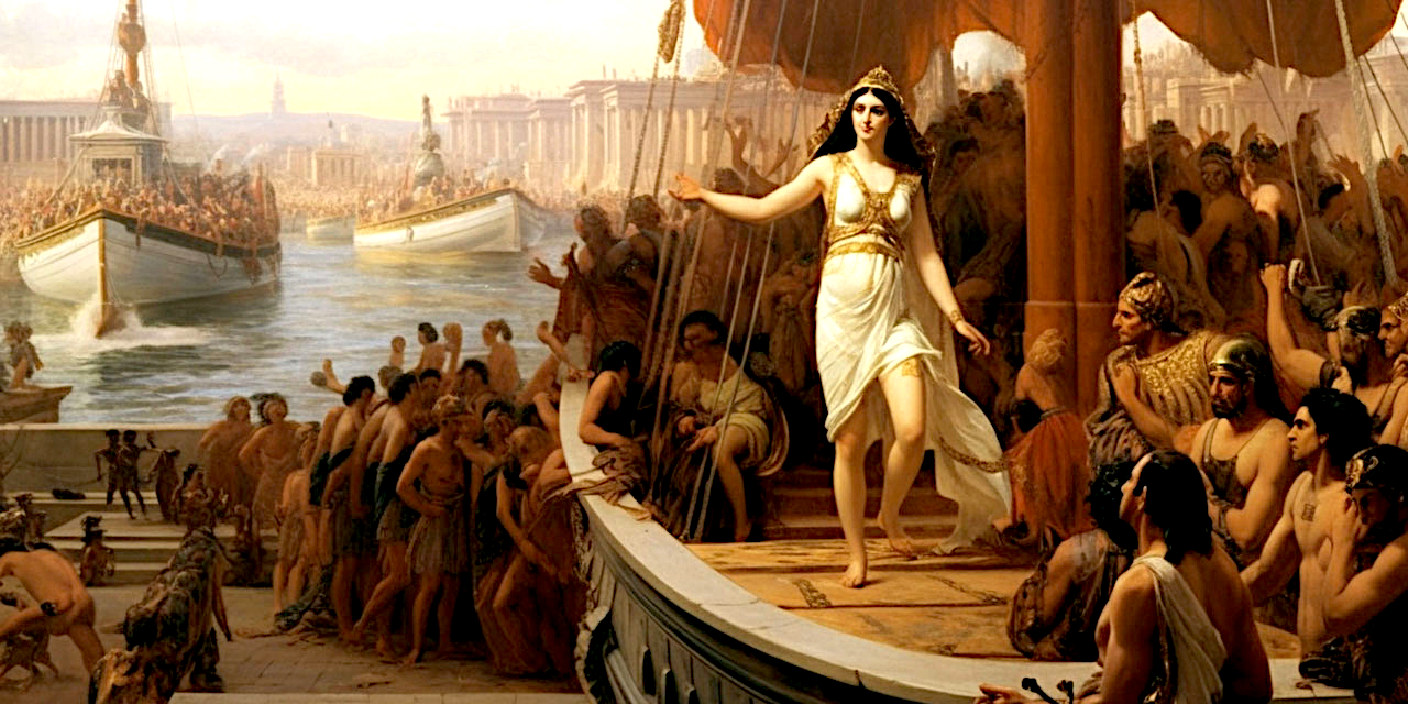
CAESAR & CLEOPATRA
48BC: Cleopatra is removed from power by Theodotas and Achillas, arrives in Syria and raises an army. The elder Pompey is defeated in Thessaly at Pharsalus, in August. Pompey the younger arrives in Egypt and is murdered as he steps ashore in Egypt on September 28. Caesar takes up residence in Alexandria and when Cleopatra returns from Syria, he forces a reconciliation between Ptolemy XIII and Cleopatra. Ptolemy begins the Alexandrian War.
47: Alexandrian War is settled but Ptolemy XIII is killed. Caesar makes Cleopatra and Ptolemy XIV joint monarchs, including Cyprus.
Julius
Caesar leaves Alexandria and Caesarion (Ptolemy Caesar), Caesar and Cleopatra's son is born June 23.
46: Cleopatra and Ptolemy XIV visit Rome where they are made allied monarchs with Caesar. A statue of Cleopatra is erected in the forum and returns to Alexandria
44: Cleopatra goes to Rome, and Julius Caesar is assassinated on March 15. Cleopatra returns to Alexandria as
Octavian arrives, and has Ptolemy XIV eliminated.
43: Formation of the Second Triumvirate: Antony, Octavian (Augustus), and Lepidus. Cassius approaches Cleopatra for assistance; she sends four of Caesar's legions in Egypt to Dolabella. The triumvirs grant official recognition of Caesarion.
42: Victory of the triumvirate at Philippi (in Macedonia)
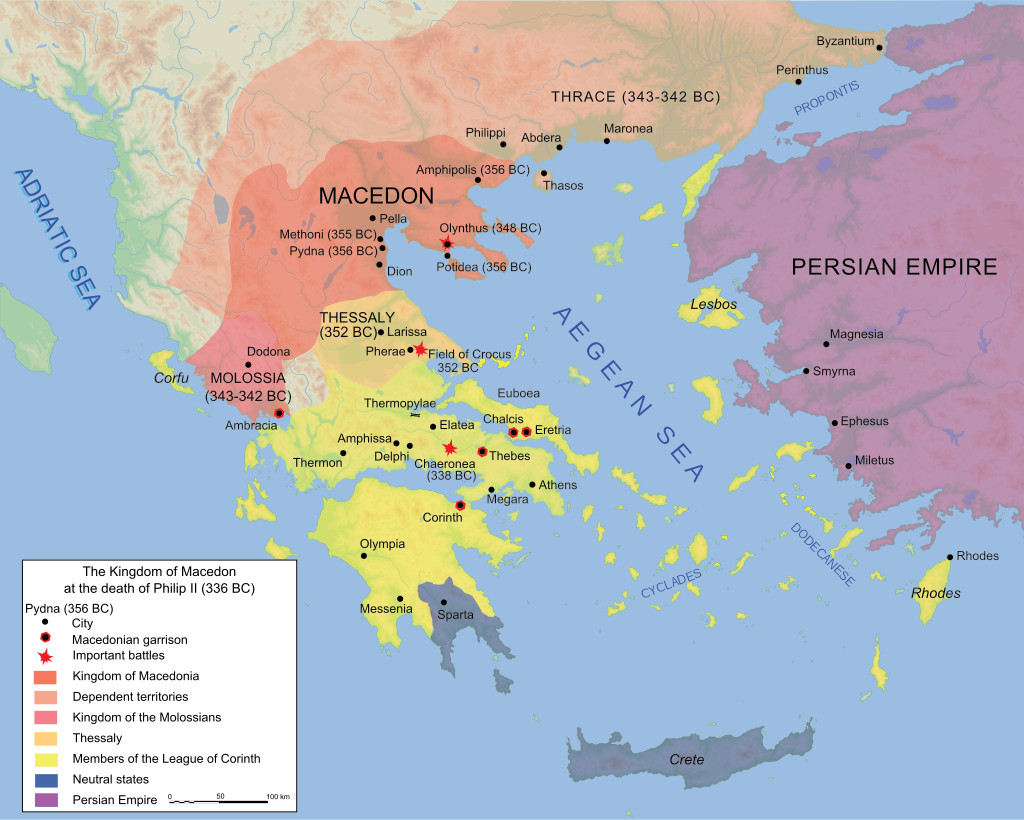
Map
showing Macedonia, Persian Empire and Thrace 365BC
CLEOPATRA & ANTONY
41BC: Antony meets Cleopatra at Tarsus; he confirms her position and joins her in Egypt for a vacation
40: In spring, Antony returns to Rome, Cleopatra gives birth to Alexander Helios and
Cleopatra
Selene II. Marc Antony's wife Fulvia dies.
Mark
Antony marries Octavia. The Second Triumvirate partitions the
Mediterranean:
1. Octavian commands the western provinces - (Spain, Sardinia, Sicily, Transalpine Gaul, Narbonne)
2. Antony commands the eastern provinces (Macedonia, Asia, Bithynia, Cilicia, Syria)
3. Lepidus commands Africa (Tunisia and Algeria)
37: Marc Antony establishes headquarters at Antioch and sends for Cleopatra who brings their three-year-old twins. Antony begins to make major territorial distributions to her, which meet with public disfavor in Rome.
36: Parthian campaign of Marc
Antony, Cleopatra travels with it, makes a tour of new possessions and visits Hero and has a fourth child, Ptolemy Philadelphos. When the Parthian expedition fails, Antony returns to Alexandrian with Cleopatra. In Rome, Lepidus is eliminated, Octavian controls Africa and becomes the effective ruler of Rome.
35: Antagonism between Antony and Octavian intensifies and Antony ceases campaigning for the year with no significant accomplishments.
34: Parthian campaign is renewed; the disloyal king of Armenia is captured. Cleopatra and Antony celebrate by holding the Donations of Alexandria ceremony, codifying her territories and making her children rulers of various areas.
Octavian and the citizens of Rome are outraged.
33: Triumvirate collapses, the result of a propaganda war between
Mark
Antony and Octavian.
32: Senators and consuls loyal to Antony join in the east.
Cleopatra and Antony move to Ephesus and begin to consolidate their forces there and in Samos and Athens. Antony divorces Octavian's sister Octavia, and Octavian declares war on Cleopatra.
END OF THE PTOLEMIES
31: Battle of Actium (September 2) and victory of Octavian; Cleopatra returns to Egypt to hand over the kingdom to Caesarian but is thwarted by Malchos. Octavian moves to Rhodes and negotiations begin.
30BC: Negotiations fail and Octavian invades Egypt.
Cleopatra sends Antony a note that she has committed suicide and he stabs himself and dies on August 1; on August 10, she commits suicide
herself, first having negotiated time with Augustus for burial
on Egyptian soil, such that her prophecy
of rebirth, might come to fruition. Her son Caesarion becomes king but Octavian has him killed as he travels to Alexandria. The Ptolemaic dynasty ends, and Egypt becomes a Roman province on August 29.
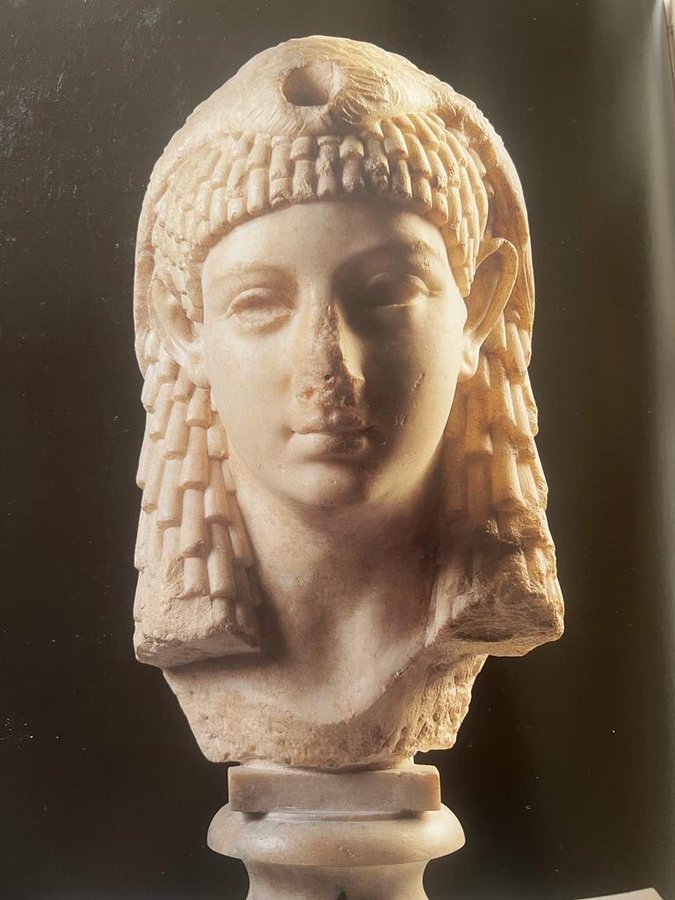 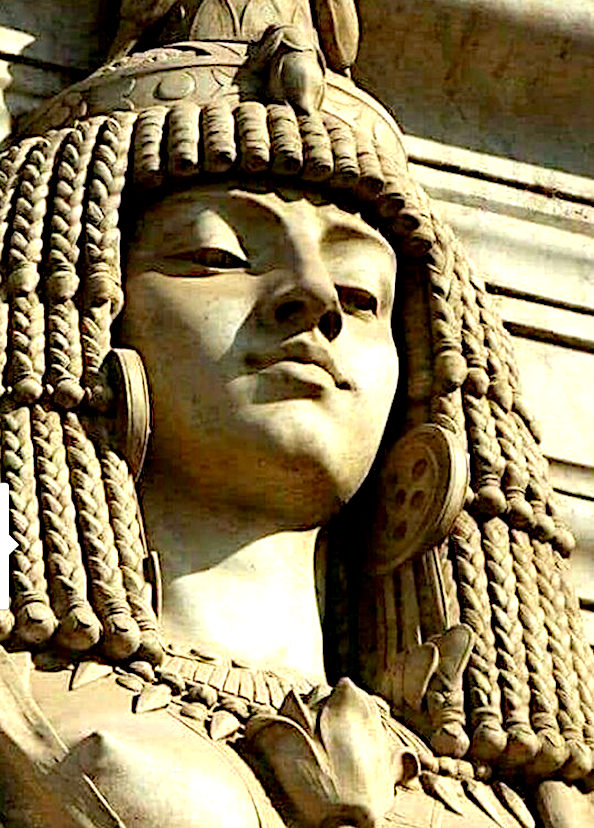
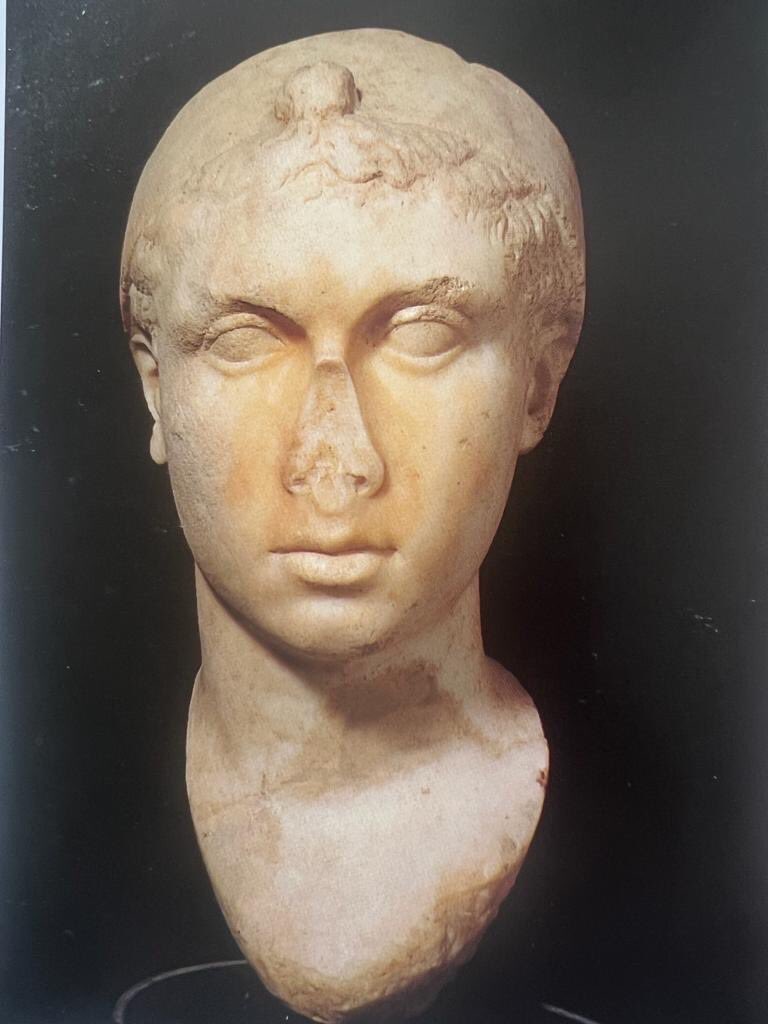
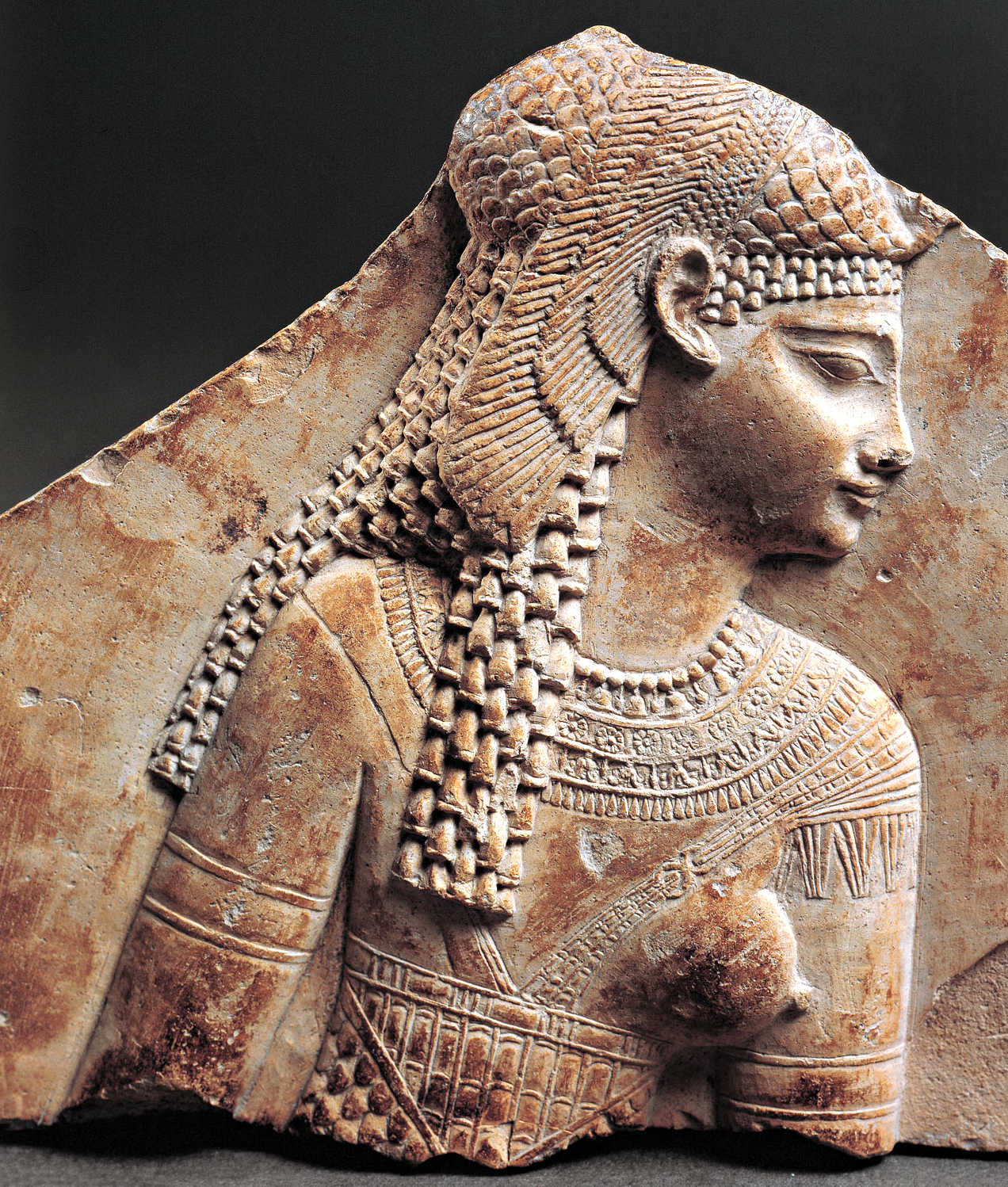
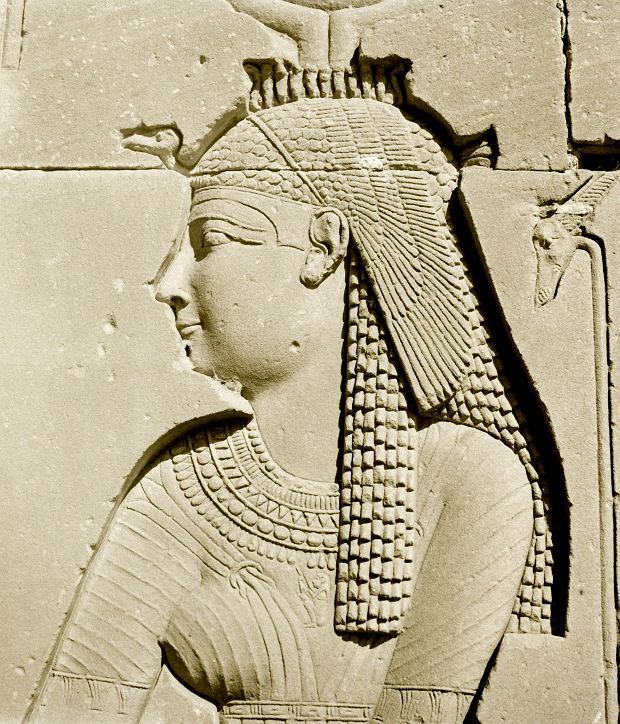
What
did Cleopatra
VII Philoptor look like?
CLEOPATRA’S death is one of the most poignant ever. After arranging Antony’s funeral, she and her children were taken prisoners and Cleopatra afraid of being humiliated
(like her sister) decided to take her life.
She would not live degraded, so she had an asp, which was an Egyptian cobra, brought to her hidden in a basket of figs. She arranged a big delicious meal and asked for figs.
When the guards entered to see Cleopatra she was already dead. They found the 39-year old queen dead on her golden bed, with her maid Iras dying at her feet. Her other maid, Charmion, was adjusting Cleopatra's crown, and she too fell over dead. Two pricks were found on Cleopatra's arm, and it was believed that she had allowed herself to be bitten by an asp (a kind of poisonous snake). As she had wished, she was buried beside
Antony. Though that is a subject for conjecture.
She died on August 12, 30 BC at the age of 39. The Egyptian religion declared that death by snakebite would secure immortality. With this, she achieved her dying wish, to not be
forgotten - and some.
The only other ruler to cast a shadow on the fascination with Cleopatra was
Alexander who was another Macedonian. After Cleopatra's death, Caesarion was strangled and the other children of Cleopatra were raised by Antony's wife, Octavia.
Her death was the mark of the end of the Egyptian Monarchs. The Roman Emperors came into to rule in Egypt.
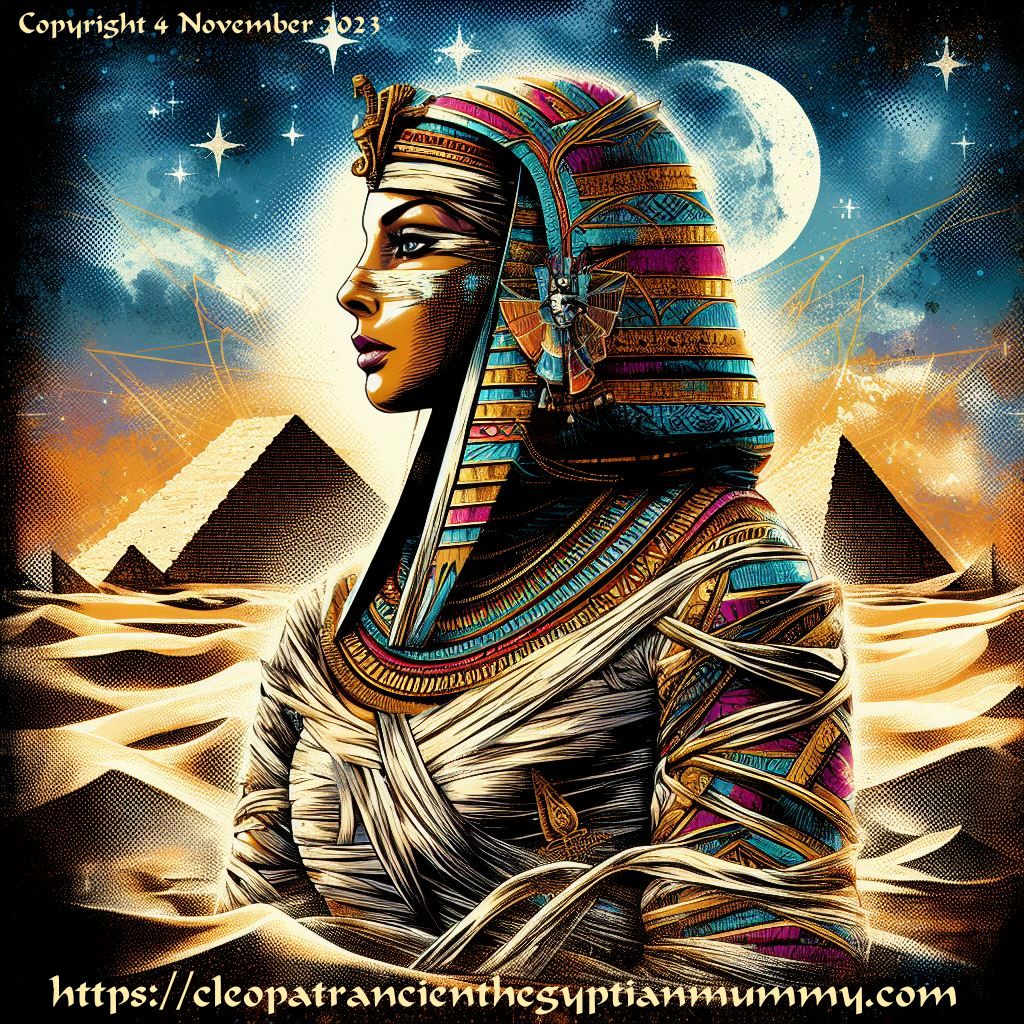
Cloning
technology is developing apace, with computer speeds always
on the increase. Making the assumption that Cleopatra took
as much care about her demise, as she took over her
appearance, costumes and cosmetics, it is possible that she
knew how best to preserve herself, to be suitably preserved,
for when the modern world was ready for her. That was not to
be mummification in the conventional sense. But super
mummification with sophisticated embalming and cleansing of
the body, in preparation for ceremonial wrapping and
immersion in ethanol and salt solution. The Pharaoh queen
knew that Thonis was sinking into the Mediterranean. Conceivably
then, she would have known to make her sarcophagus
watertight. As her temple mausoleum was in a vulnerable
location.
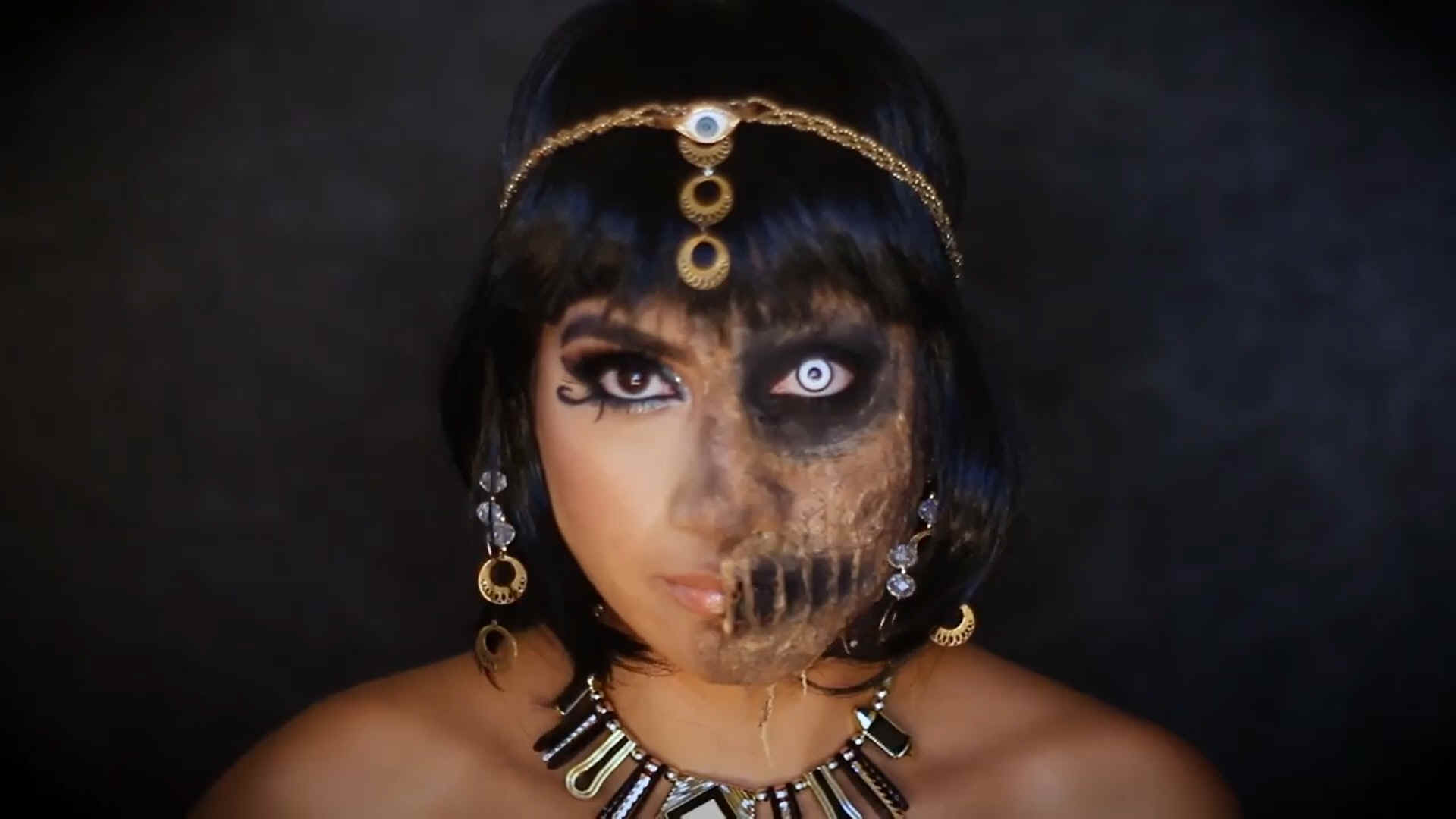
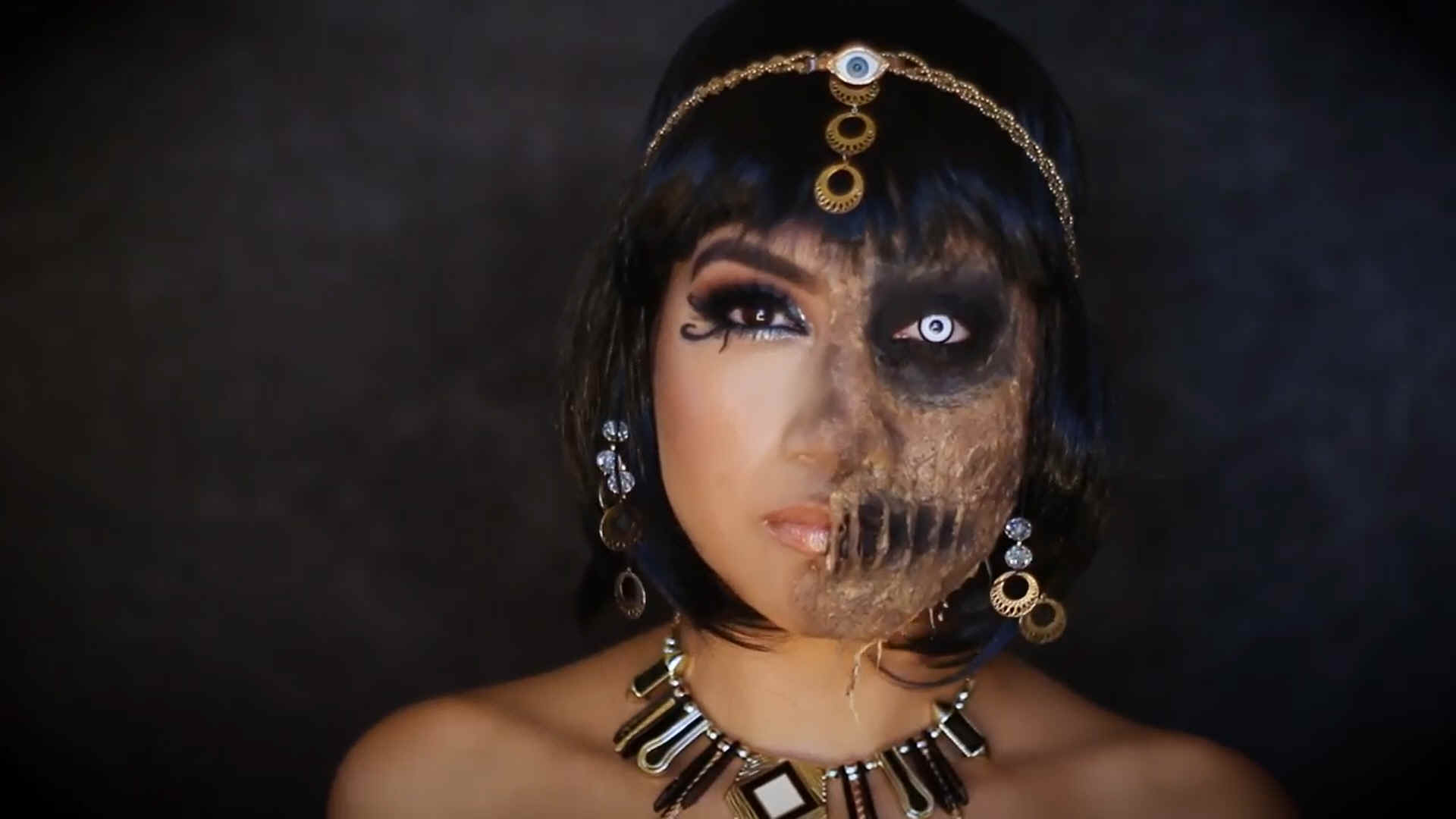
SHADES
OF CLEOPATRA -
Over five thousand years ago, the ancient Egyptians used eye shadow, not only for cosmetic but practical purposes as well. Dark pigment painted around the eye helped protect the eye from the bright midday sun glaring off the desert sands. The earliest eye paint in ancient Egypt was a thick, bright green paste made from the mineral malachite.
By the time Queen Cleopatra came to power in the 1st century BC, Egyptian women had at their disposal a whole rainbow pallete of
cosmetics, all of which were made from rocks, minerals, and plants in the region. Cleopatra used the bright green malachite paste of the ancient Egyptians on her lower eyelids.
Though Cleopatra bore the ancient Egyptian title of pharaoh, the Ptolemaic dynasty was Hellenistic, having been founded 300 years before by Ptolemy I Soter, a Macedonian Greek general of
Alexander the
Great. As such Cleopatra's language was the Greek spoken by the Hellenic aristocracy, though she was reputed to be the first ruler of the dynasty to learn Egyptian. She also adopted common Egyptian beliefs and deities. Her patron goddess was Isis, and thus during her reign it was believed that she was the re-incarnation and embodiment of the goddess of wisdom. Her death marks the end of the Ptolemaic Kingdom and Hellenistic period and the beginning of the Roman era in the eastern
Mediterranean.
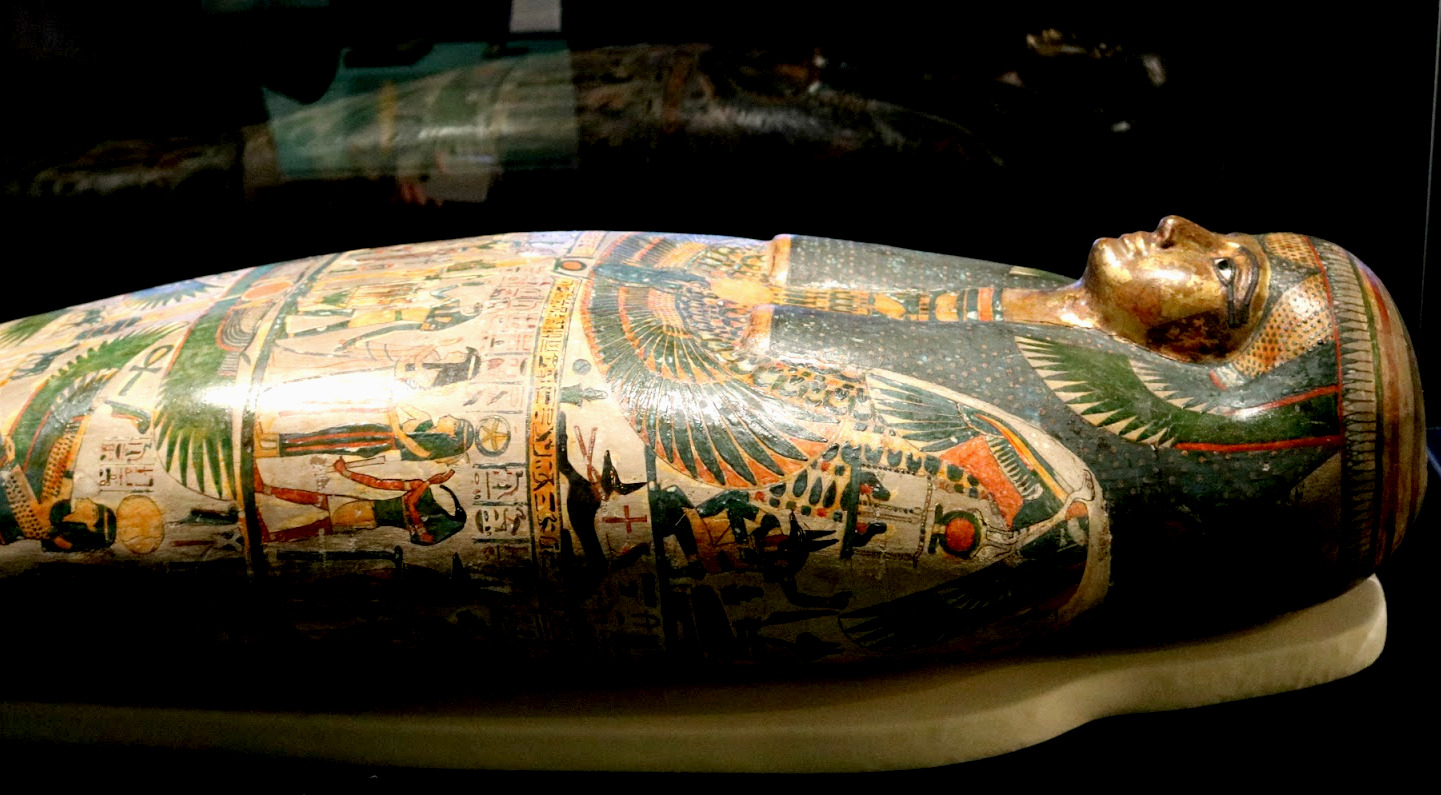
To this day Cleopatra remains a popular figure in Western culture. Her legacy survives in numerous works of art and the many dramatizations of her story in literature and other media, including William Shakespeare's tragedy Antony and Cleopatra, Jules Massenet's opera Cléopâtre and the 1963 film Cleopatra. In most depictions, Cleopatra is put forward as a great beauty and her successive conquests of the world's most powerful men is taken to be proof of her aesthetic and sexual appeal. In his Pensées, philosopher Blaise Pascal contends that Cleopatra's classically beautiful profile changed world history: "Cleopatra's nose, had it been shorter, the whole face of the world would have been changed."
Please use our
A-Z to
navigate this site or return HOME
|
